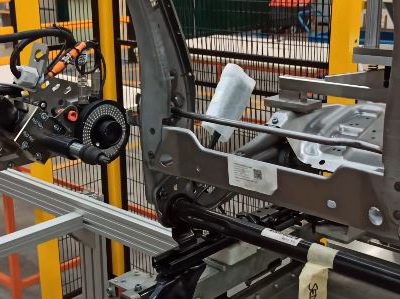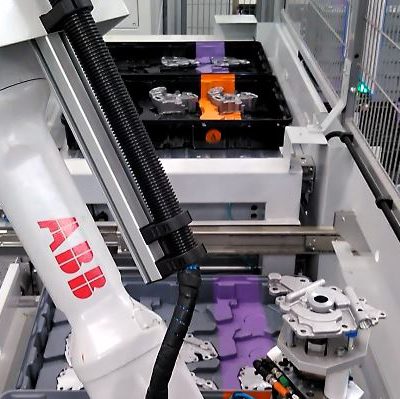Robotic cells in the automotive industry: innovation and efficiency
Robotic cells represent a fundamental chapter of industrial automation, significantly contributing to production efficiency, precision, and cost reduction.
The automotive industry is one of the pioneers in adopting advanced technologies, particularly in production techniques. Among these, robotic cells represent a fundamental chapter of industrial automation, contributing significantly to production efficiency, precision, and cost reduction.
A robotic cell in the automotive field is a complex system that integrates one or more industrial robots, equipped with various tools and control devices, to perform specific production operations. These cells are designed to be extremely versatile and can be adapted to perform various tasks, from assembly to screwing, such as the Restart cell for screwing the car seat frame.
Key Features
- Advanced Automation: Robotic cells are capable of performing tasks with high precision, reducing the risk of errors and increasing the repeatability of operations.
- Flexibility: Robots can be reprogrammed and reconfigured to adapt to new processes or changes in the production model, making robotic cells ideal for quickly responding to market fluctuations and product customization needs.
- Improved Safety: Robotic cells are designed to operate under optimal safety conditions for operators. They are often equipped with physical barriers and electronic safety systems that minimize the risk of accidents.
The implementation of robotic cells in the automotive industry brings numerous benefits:
- Increased Productivity: Robots can operate 24 hours a day, with minimal machine downtime.
- Consistent Quality: The precision of robots ensures that each component is produced to exact specifications, reducing variability and improving the overall product quality.
- Cost Reduction: By minimizing manual labor and increasing production speed, robotic cells can significantly reduce labor costs and increase overall efficiency.
Future Challenges
Despite the many advantages, the adoption of robotic cells also presents challenges. The need for significant initial investments, operator training, and the integration of these systems into existing factories are aspects that require attention. Furthermore, technological advancements continue to drive the evolution of these solutions, with increasing emphasis on machine learning, AI, and collaborative robotics.
Robotic cells have become an indispensable element in the automotive industry, bringing innovation and tangible improvements. With further technological developments and increasing integration of intelligent systems, the future of industrial automation promises to make production even more efficient, safe, and sustainable. The automotive industry, already at the forefront of adopting these technologies, will undoubtedly continue to be a benchmark for other industrial sectors.


